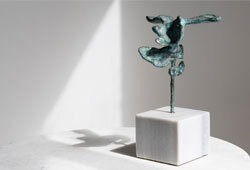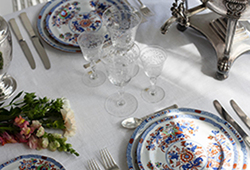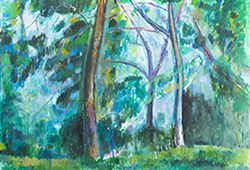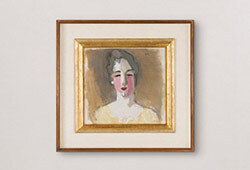A five clawed dragon kesi robe on blue ground, Jifu, Qing dynasty, 19th Century.
Finely woven in the split weave technique with the prescribed nine five clawed dragons clutching flaming pearls and hovering above the terrestial diagram and lishui stripe amdist a ruyi-form cloud clusters interspersed with auspicious emblems such as bats and various renditions of shou characters, the arms are striped in gold. Length 146 cm. Width arm to arm 192 cm.
Damages, repair, wear.
Alkuperä - Provenienssi
From Ericsbergs castle, thence by descent.
Robes decorated with dragons are the quintessential Qing dynasty garments. They were the dress of the imperial government, its civil administration. They were supreme significant social markers prepresenting access to power. The right to wear them depended on rank and status. From the very start of the reign of the Qing Manchus, they were are of image and used dress as an important tool to communicate legitimacy and heritage.
The early robes, has usually one or a pair of dragons, but from early 18th Century and onwards the design of nine dragons were the norm.
Näyttelyt
Compare robe in this style, Christies, The Imperial Wardrobe, Wednesday, March 19, 2008. Lot 10.
Compare; An Imperial Court Robe in the Collection of the Metropolitan Museum, Title: Imperial Court Robe, Accession Number: 57.28.3, from the Collection of Mrs. Willis Wood, 1957.
Kirjallisuus
G. Gickinson and L. Wriggelsworth, the imperial wardrobe, London, 1999. Compare kesi, page 61.
Muut tiedot
The use of the blue colour was associated with the Temple of Heaven, south of the palace, where the Emperor offered sacrifice at the winter solstice and also prayed for rain during the summer months.




















































